Introducing Small Kitchen Backsplashes
In a small kitchen, every design choice counts, and the backsplash is no exception. A well-designed backsplash not only protects your walls from spills and splatters but also adds a significant style element to the space. With the right materials, colors, and patterns, a backsplash can make a small kitchen feel more spacious, cohesive, and visually appealing.
Small kitchen backsplashes offer the opportunity to experiment with different design elements without overwhelming the space. From classic subway tiles to bold mosaics, there are numerous options to suit various tastes and kitchen styles. Choosing the right backsplash can enhance your kitchen’s overall aesthetic and make daily tasks more enjoyable.
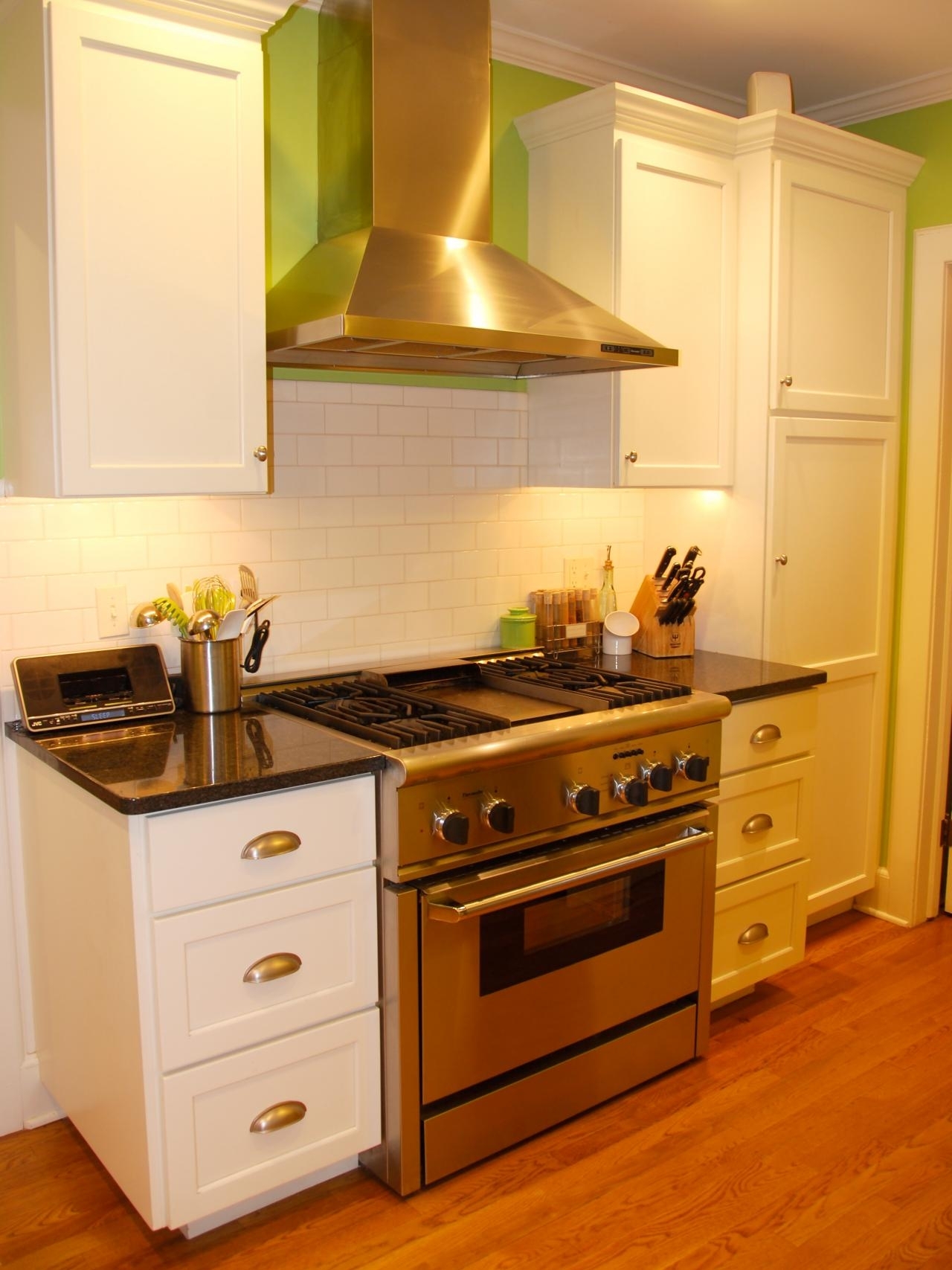
The functionality of a backsplash in a small kitchen cannot be understated. It serves as a protective barrier against moisture, grease, and food particles, making it easier to clean and maintain your kitchen. This practical aspect is especially important in small kitchens where counter space is limited and cleanliness is crucial.
Innovative design ideas for small kitchen backsplashes can also create the illusion of a larger space. Light-colored tiles, reflective materials, and clever patterns can open up the kitchen and make it feel more expansive. This visual trickery is invaluable in small spaces where every inch matters.

Cost-effectiveness is another advantage of small kitchen backsplashes. Due to the reduced area, you can often afford higher-end materials and more intricate designs that would be prohibitively expensive in larger kitchens. This allows for greater creativity and personalization without breaking the bank.
Ultimately, a well-chosen backsplash can transform a small kitchen from a utilitarian space into a stylish and functional heart of the home. By considering the unique challenges and opportunities of small kitchen design, you can create a backsplash that enhances both the look and utility of your kitchen.
Materials for Small Kitchen Backsplashes
Selecting the right material for your small kitchen backsplash is crucial for achieving the desired look and functionality. Tile is one of the most popular choices due to its durability, variety, and ease of maintenance. Ceramic and porcelain tiles are particularly favored for their resistance to moisture and heat, making them ideal for kitchen environments.
Glass tiles are another excellent option, especially for small kitchens. Their reflective properties can make the space appear larger and brighter. Glass tiles come in various colors and finishes, allowing for a high degree of customization. They are also easy to clean, which is a significant advantage in a busy kitchen.
Natural stone, such as marble, granite, and travertine, adds a touch of luxury and timeless elegance to a small kitchen backsplash. While these materials require more maintenance and sealing to prevent stains and damage, their unique patterns and textures can create a stunning focal point in the kitchen.
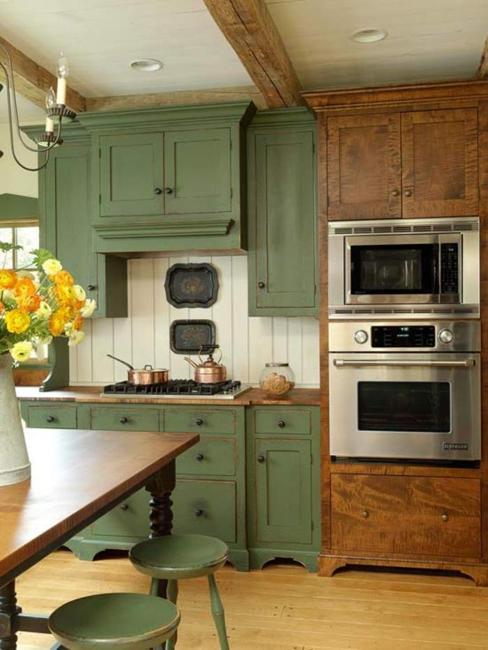
Stainless steel backsplashes are perfect for those seeking a modern, industrial look. This material is highly durable, heat-resistant, and easy to clean, making it a practical choice for small kitchens. The reflective surface of stainless steel can also help to visually expand the space, similar to glass tiles.
Peel-and-stick backsplashes have gained popularity for their ease of installation and budget-friendly nature. These self-adhesive tiles mimic the look of more expensive materials and can be installed without professional help. They are an excellent option for renters or those looking to update their kitchen on a tight budget.
Finally, mosaic tiles offer a versatile and creative solution for small kitchen backsplashes. Available in various materials, colors, and patterns, mosaics can add intricate detail and personality to the space. The small size of mosaic tiles makes them particularly suited for small kitchens, where they can create a dynamic and visually interesting backsplash without overwhelming the space.
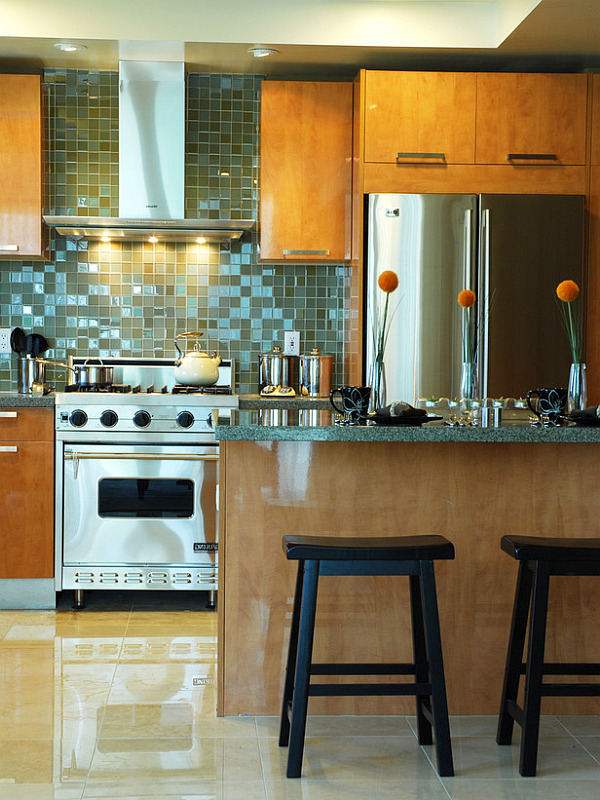
Color Schemes and Patterns
Choosing the right color scheme and pattern for your small kitchen backsplash can significantly impact the overall look and feel of the space. Light colors, such as white, cream, and pastel shades, are excellent for small kitchens as they can make the area feel more open and airy. These colors reflect light, enhancing the brightness and creating a sense of spaciousness.
Bold and dark colors can also work in small kitchens, provided they are used strategically. A dark backsplash can create a striking contrast against light-colored cabinets and countertops, adding depth and drama to the space. To prevent the kitchen from feeling too closed in, consider using dark colors in moderation or incorporating reflective elements to balance the design.
Patterns play a crucial role in the visual impact of a small kitchen backsplash. Classic subway tiles arranged in a staggered brick pattern offer a timeless and clean look that works well in any kitchen style. For a more contemporary feel, consider arranging the tiles in a herringbone or chevron pattern. These layouts add a dynamic touch and can make the backsplash a focal point.
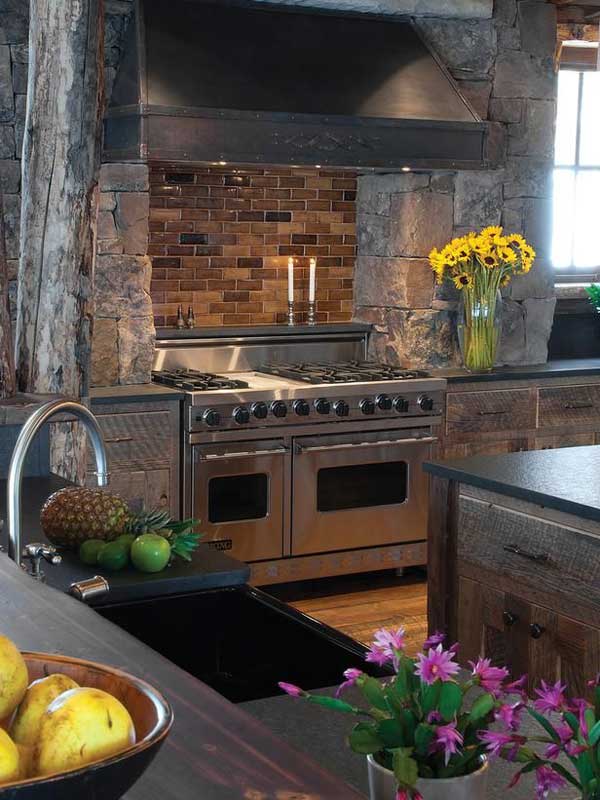
Geometric patterns are another popular choice for small kitchen backsplashes. Hexagons, diamonds, and other shapes can create a modern and eye-catching design. When using bold patterns, it’s essential to keep the rest of the kitchen’s design elements more subdued to avoid visual clutter.
A mosaic backsplash offers endless possibilities for creative expression. Mixing different colors, shapes, and materials can result in a unique and personalized design. In small kitchens, it’s often best to use mosaic patterns sparingly, perhaps as an accent or feature wall, to prevent the space from feeling too busy.
If you prefer a more understated look, a monochromatic color scheme can create a sleek and sophisticated backsplash. Using different shades of the same color adds depth and interest without overwhelming the small space. This approach is particularly effective with textured tiles or materials that add subtle variations in light and shadow.

Installation Tips and Techniques
Installing a backsplash in a small kitchen requires careful planning and precision to achieve a professional-looking result. One of the first steps is to measure the area accurately and purchase slightly more material than needed to account for mistakes and future repairs. This ensures you have a consistent look and can complete the project without interruptions.
Preparation is key to a successful installation. Start by cleaning the wall surface thoroughly to remove any grease, dirt, or old adhesive. For best results, the wall should be smooth and dry. If necessary, patch any holes or uneven areas and sand the surface to create a suitable base for the backsplash.
When it comes to cutting tiles, a tile cutter or wet saw is essential for achieving clean, precise cuts. Take your time to measure and mark each tile accurately before cutting. This is especially important in small kitchens where even minor errors can be more noticeable. Safety goggles and gloves are recommended to protect yourself while cutting tiles.
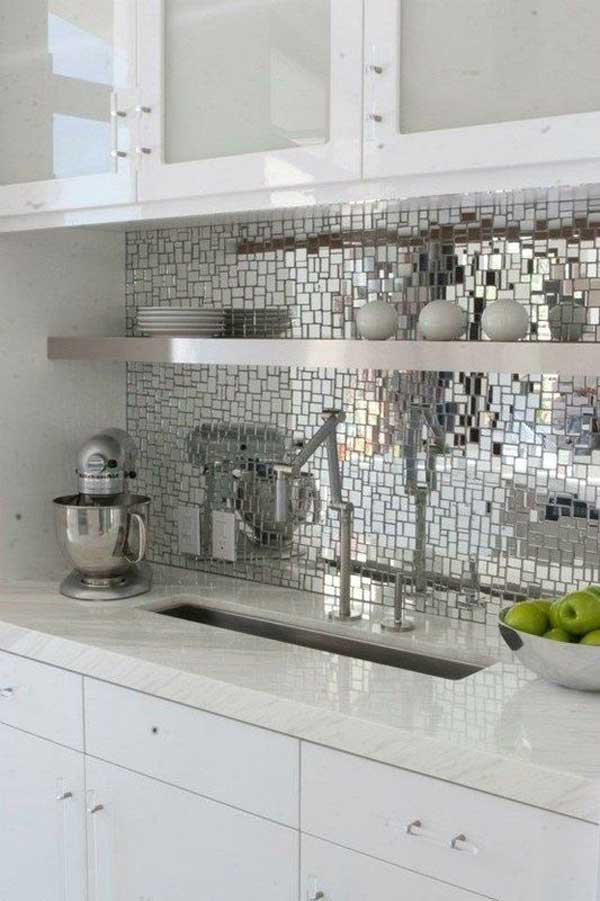
Adhesive application is another critical step. Use a notched trowel to spread the adhesive evenly on the wall, working in small sections to prevent it from drying out before you can place the tiles. Press each tile firmly into the adhesive, ensuring it is level and properly aligned. Use spacers to maintain consistent gaps between tiles for grout.
Grouting the tiles is the next step once the adhesive has been set. Apply the grout with a rubber float, pressing it into the gaps between the tiles. Remove excess grout with the float and wipe the tiles with a damp sponge to clean the surface. It’s important to work carefully to avoid scratching the tiles or leaving grout residue behind.
Finally, sealing the grout is crucial for preventing stains and moisture penetration, especially in a small kitchen where spills are more likely. Choose a high-quality grout sealer and apply it according to the manufacturer’s instructions. Regularly re-seal the grout to maintain its protective properties and keep your backsplash looking new.
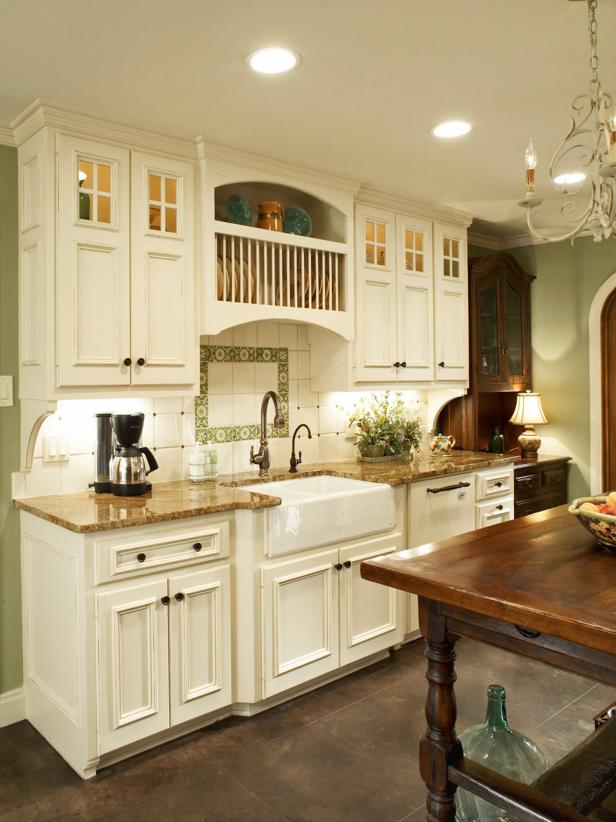
Maintenance and Cleaning
Proper maintenance and cleaning are essential to keep your small kitchen backsplash looking its best and functioning effectively. Regular cleaning helps prevent the buildup of grease, food particles, and grime, which can cause discoloration and damage over time. Using the right cleaning techniques and products ensures the longevity and appearance of your backsplash.
Daily or weekly cleaning with mild soap and water is usually sufficient for most backsplash materials. A soft cloth or sponge can be used to wipe down the tiles, removing any surface dirt and grease. Avoid using abrasive cleaners or scrubbers, as these can scratch or damage the tiles and grout.
For tougher stains and buildup, a mixture of vinegar and water can be effective. Spray the solution onto the backsplash and let it sit for a few minutes before wiping it off with a damp cloth. This natural cleaner is particularly useful for removing grease and can be used safely on most tile surfaces.
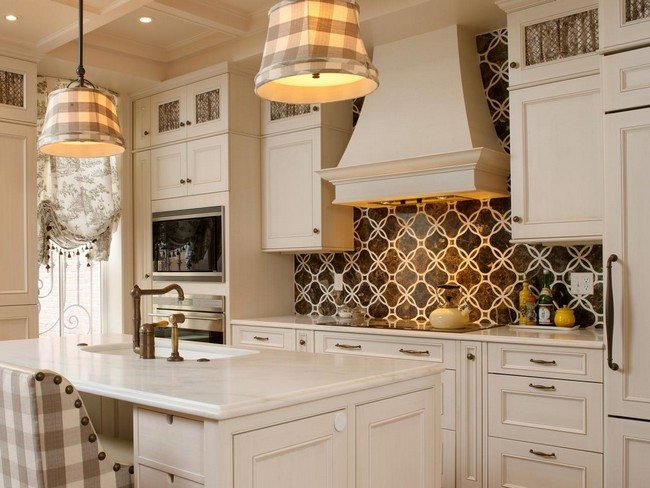
Grout lines require special attention, as they can easily become discolored and dirty. A grout cleaner or a mixture of baking soda and water can be applied with a small brush to scrub the grout lines. Regularly cleaning and sealing the grout helps maintain its appearance and prevents stains and moisture damage.
For natural stone backsplashes, it’s important to use pH-neutral cleaners specifically designed for stone surfaces. Acidic cleaners, such as vinegar or lemon juice, can etch and damage natural stone. Regularly sealing stone tiles and grout helps protect against stains and moisture, preserving their natural beauty and durability.
Glass and stainless steel backsplashes are relatively easy to maintain. A glass cleaner or a mixture of water and dish soap can be used to keep these surfaces clean and shiny. Avoid using abrasive pads or brushes, as they can scratch the reflective surfaces. For stainless steel, wiping in the direction of the grain helps maintain its finish and reduces streaks.
Regular maintenance and proper cleaning techniques not only keep your backsplash looking new but also extend its lifespan. By taking care of your backsplash, you can ensure it remains a beautiful and functional part of your small kitchen for years to come.
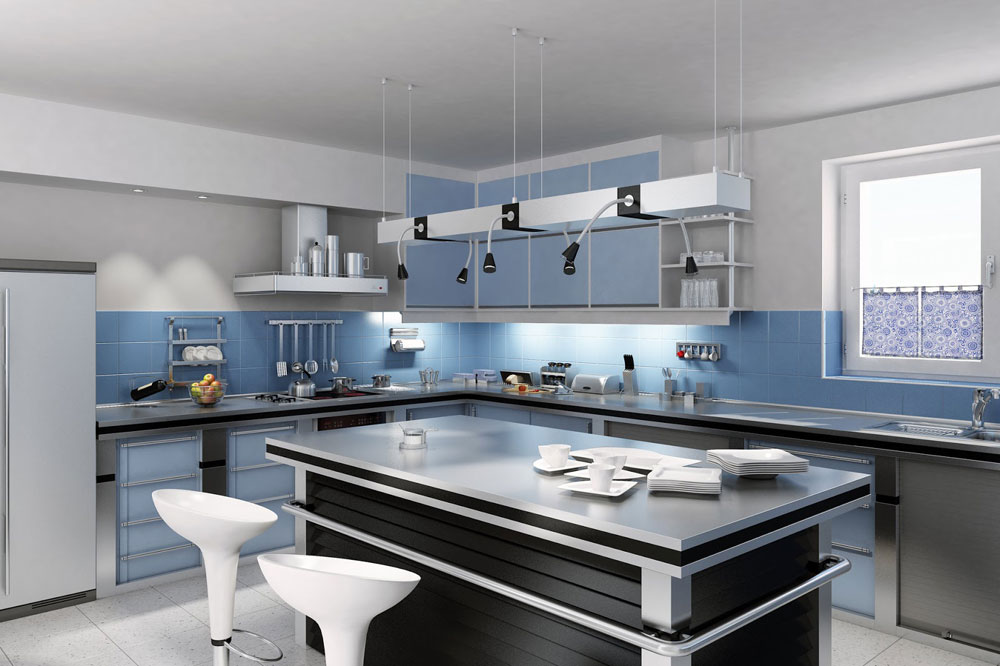
Creative Design Ideas
Exploring creative design ideas for small kitchen backsplashes can add a unique and personal touch to your space. One popular trend is the use of bold, colorful tiles to create a statement backsplash. Bright colors and patterns can add personality and vibrancy to a small kitchen, making it a focal point and conversation starter.
Incorporating metallic tiles or accents is another way to add a touch of glamour and sophistication. Copper, gold, and silver tiles can create a luxurious feel and catch the light beautifully. These metallic accents work well in modern and contemporary kitchens, adding a sleek and stylish element to the design.
A mirrored backsplash is an innovative idea for small kitchens, as it reflects light and creates the illusion of more space. Mirrored tiles or panels can be used to cover the entire backsplash or as an accent. This design choice not only enhances the visual appeal but also makes the kitchen feel larger and more open.

Mixing different materials and textures can result in a visually interesting and dynamic backsplash. Combining tiles with wood, metal, or even fabric elements can create a unique and personalized look. This approach allows for endless creativity and customization, making your small kitchen truly one-of-a-kind.
Patterned tiles, such as Moroccan or encaustic tiles, can add an exotic and artistic touch to a small kitchen. These intricate designs create a stunning visual impact and can be used as a feature wall or accent within the backsplash. Patterned tiles are perfect for adding character and charm to the space.
For a more minimalist and modern look, consider using large-format tiles or seamless panels. These designs create a clean and sleek appearance with fewer grout lines, making the backsplash easier to clean and maintain. Large-format tiles can make a small kitchen feel more streamlined and spacious.
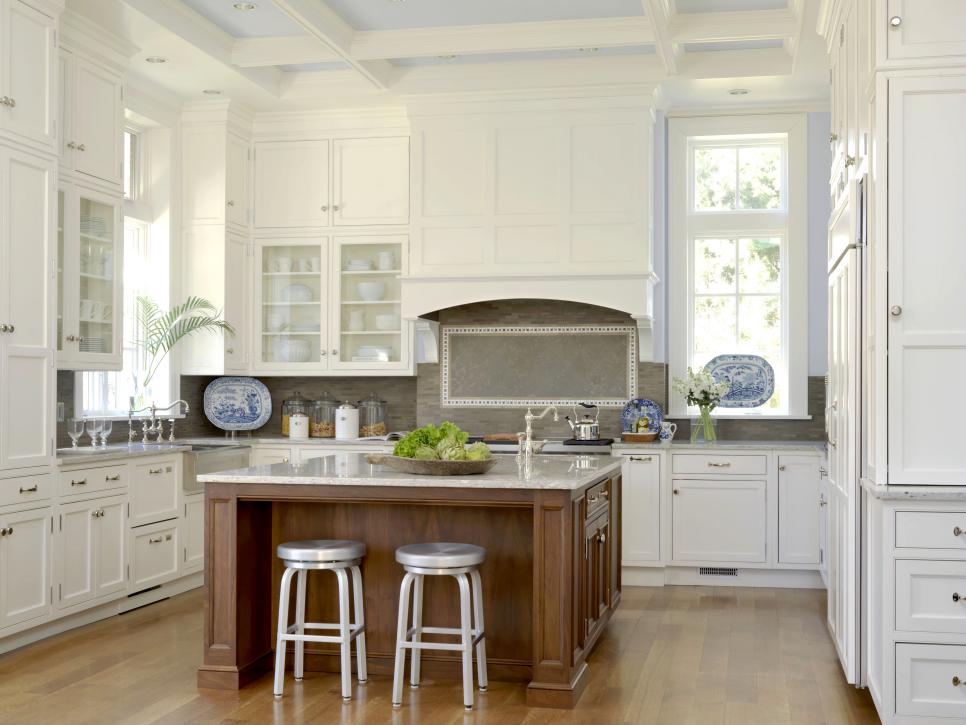
Common Mistakes to Avoid
When designing and installing a small kitchen backsplash, avoiding common mistakes can ensure a successful and satisfying result. One common mistake is choosing a backsplash that overwhelms the space. In small kitchens, it’s important to select tiles and patterns that enhance the area without making it feel cluttered or busy.
Another mistake is neglecting the functionality of the backsplash. While aesthetics are important, the primary purpose of a backsplash is to protect the walls from moisture, grease, and stains. Ensure that the materials chosen are durable, easy to clean, and suitable for a kitchen environment.
Incorrect installation is a frequent issue that can lead to problems down the line. Poorly installed tiles can result in uneven surfaces, gaps, and eventual damage. It’s essential to follow proper installation techniques or hire a professional to ensure the backsplash is installed correctly and securely.
Ignoring the importance of grout is another common mistake. The color and quality of the grout can significantly impact the overall look of the backsplash. Choosing the wrong grout color can detract from the tiles, while low-quality grout can crack and discolor over time. Opt for high-quality grout and consider sealing it to maintain its appearance and durability.
Failing to consider the overall kitchen design can result in a mismatched and disjointed look. The backsplash should complement the cabinets, countertops, and flooring, creating a cohesive and harmonious design. Consider the style, colors, and materials of the entire kitchen to ensure the backsplash enhances the overall aesthetic.
Lastly, not planning for future maintenance can lead to unnecessary hassles. Some materials require regular sealing and special cleaning products, which can add to the upkeep. Understanding the maintenance needs of your chosen backsplash material and committing to regular care will ensure it stays in excellent condition.
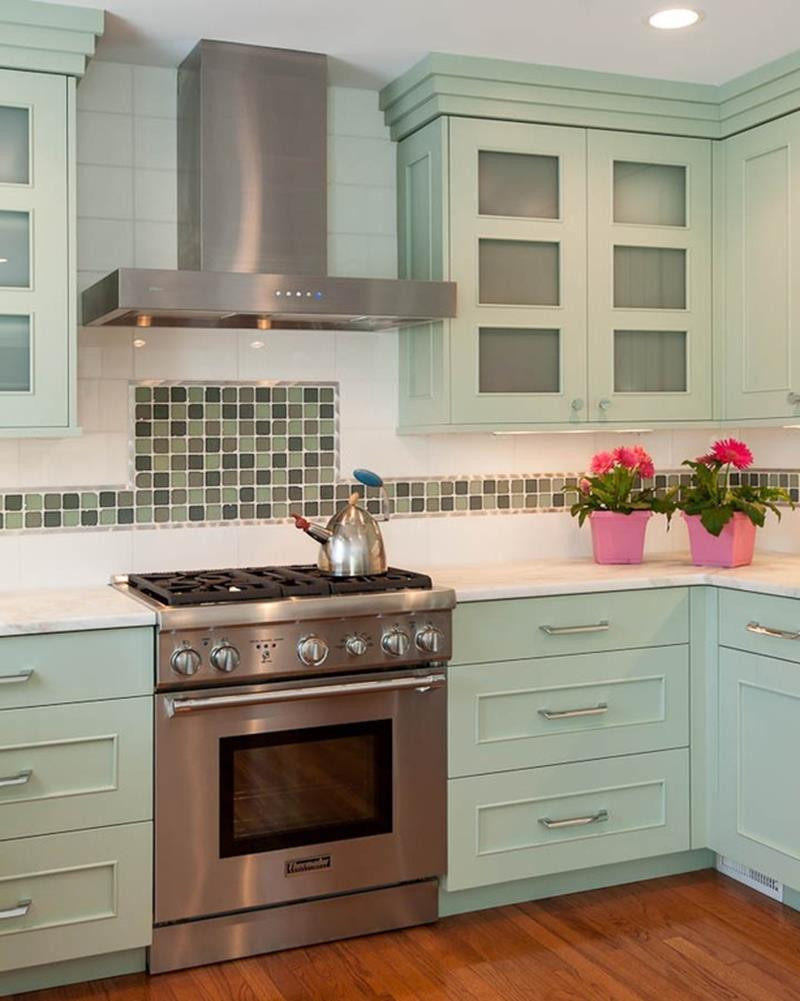
What are the best materials for a small kitchen backsplash?
The best materials for a small kitchen backsplash include ceramic and porcelain tiles, glass tiles, natural stone, stainless steel, peel-and-stick tiles, and mosaic tiles. Each material offers unique benefits in terms of durability, maintenance, and aesthetics. Ceramic and porcelain are popular for their moisture resistance and variety, while glass and stainless steel can make the space appear larger due to their reflective properties. Natural stone adds elegance but requires more maintenance, whereas peel-and-stick options are budget-friendly and easy to install.
How do I choose the right color for my kitchen backsplash?
Choosing the right color for your kitchen backsplash involves considering the overall design and color scheme of your kitchen. Light colors like white, cream, and pastels can make a small kitchen feel more open and airy, while bold colors can create a striking focal point. It’s important to balance the backsplash color with the cabinets, countertops, and flooring. For a cohesive look, you can match the backsplash color to the kitchen’s dominant hues or use complementary colors to add contrast and interest.
What patterns are best for small kitchen backsplashes?
Patterns that work well for small kitchen backsplashes include classic subway tiles in a staggered brick pattern, herringbone and chevron layouts, geometric shapes, and mosaic designs. Subway tiles offer a timeless look, while herringbone and chevron patterns add a contemporary touch. Geometric patterns like hexagons and diamonds create a modern aesthetic, and mosaic tiles allow for creative and personalized designs. It’s crucial to choose patterns that enhance the space without overwhelming it, ensuring the kitchen feels balanced and cohesive.
How do I maintain my small kitchen backsplash?
Maintaining a small kitchen backsplash involves regular cleaning with mild soap and water, using a soft cloth or sponge to wipe down the tiles. For tougher stains, a mixture of vinegar and water or a specialized cleaner can be used. It’s important to avoid abrasive cleaners that can scratch the tiles. Grout lines should be cleaned with a grout cleaner or a baking soda mixture and sealed regularly to prevent stains and moisture damage. Specific maintenance routines depend on the material of the backsplash, with natural stone requiring more care than ceramic or glass tiles.
Can I install a backsplash myself, or should I hire a professional?
Installing a backsplash can be a DIY project if you have the necessary tools, skills, and patience. The process involves measuring the area, cutting tiles accurately, applying adhesive, and grouting. However, for those unfamiliar with tile installation or dealing with complex patterns and materials, hiring a professional is advisable. A professional ensures the backsplash is installed correctly, preventing issues like uneven tiles, gaps, and future damage. This investment can save time and potential repair costs in the long run.
How can I make my small kitchen backsplash stand out?
To make your small kitchen backsplash stand out, consider using bold colors, unique patterns, or a mix of materials. Incorporating metallic accents, such as copper or stainless steel, can add a touch of glamour. A mirrored backsplash can create the illusion of more space and reflect light, enhancing the kitchen’s brightness. Mixing different textures, such as combining tiles with wood or metal elements, can create a dynamic and personalized look. Additionally, patterned tiles like Moroccan or encaustic designs can add an artistic and exotic touch, making the backsplash a focal point.

Related Posts:
- Stained Glass Backsplash Kitchen
- Wood Look Tile Kitchen Backsplash
- Ledgestone Backsplash Kitchen
- Retro Kitchen Backsplash
- Tile For Kitchen Backsplash Design
- Types Of Kitchen Backsplash Tiles
- Stainless Steel Kitchen Backsplash Singapore
- Kitchen Backsplash Mosaic Tile Designs
- Glass Mosaic Kitchen Backsplash
- How To Tile A Kitchen Wall Backsplash